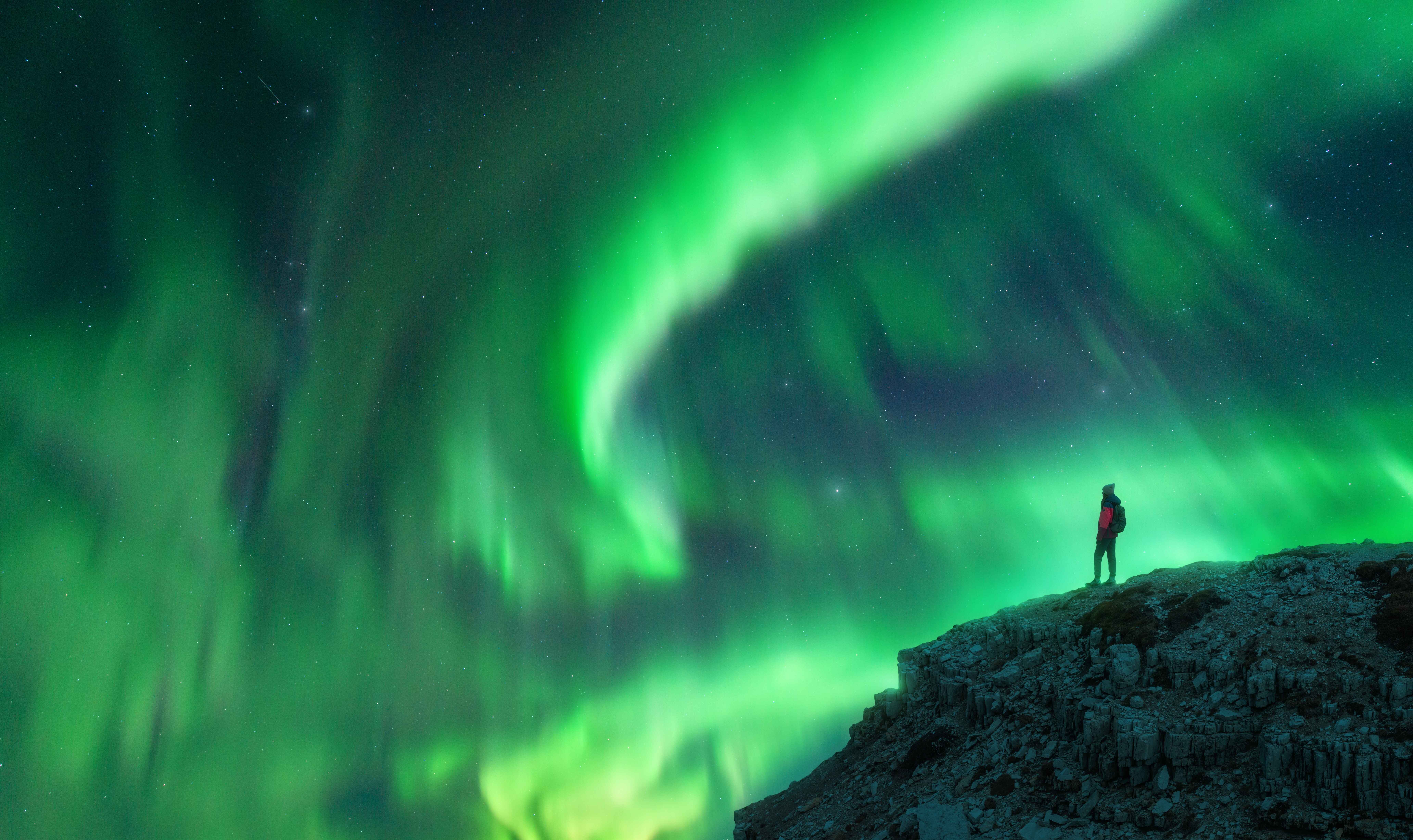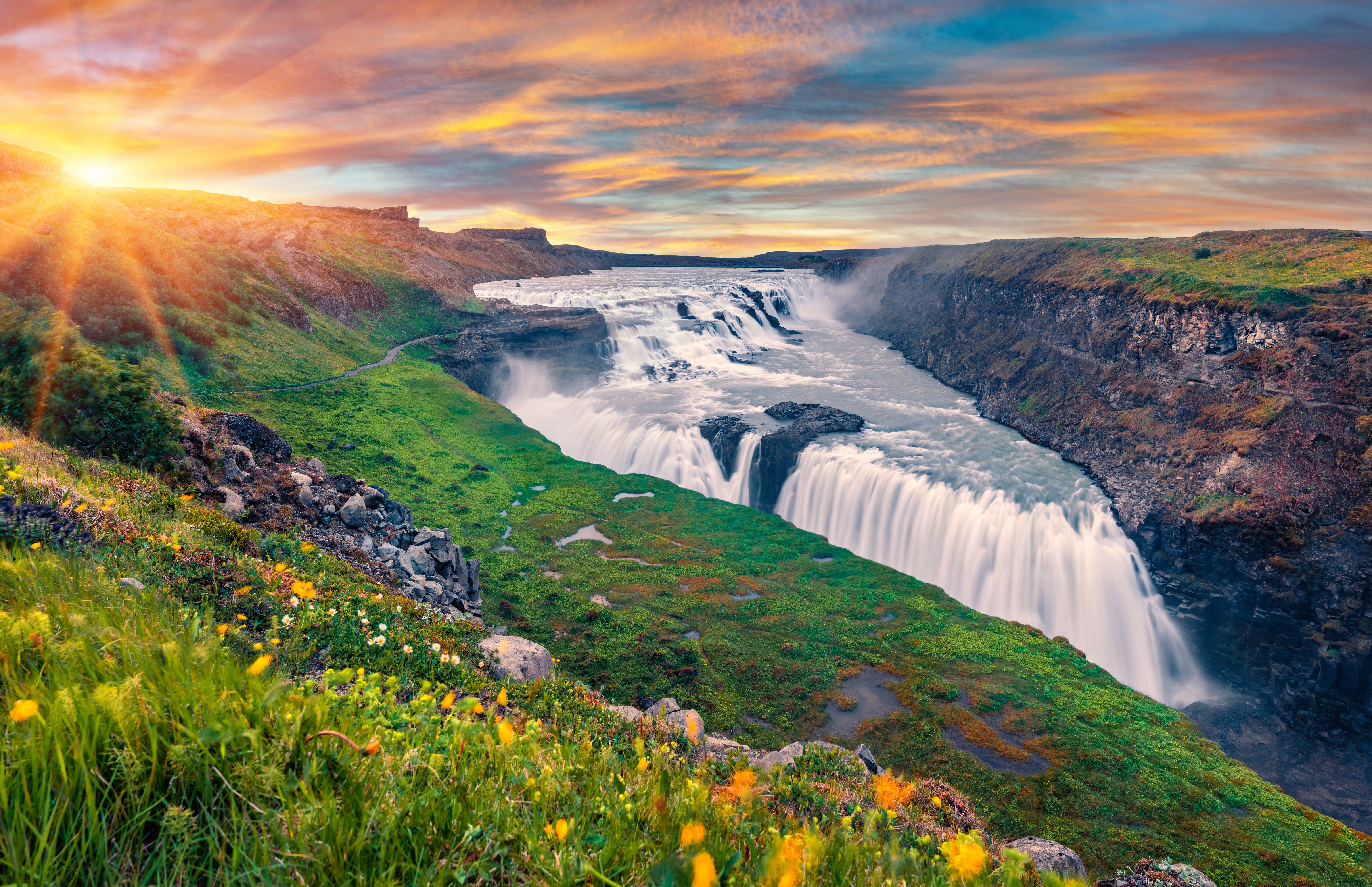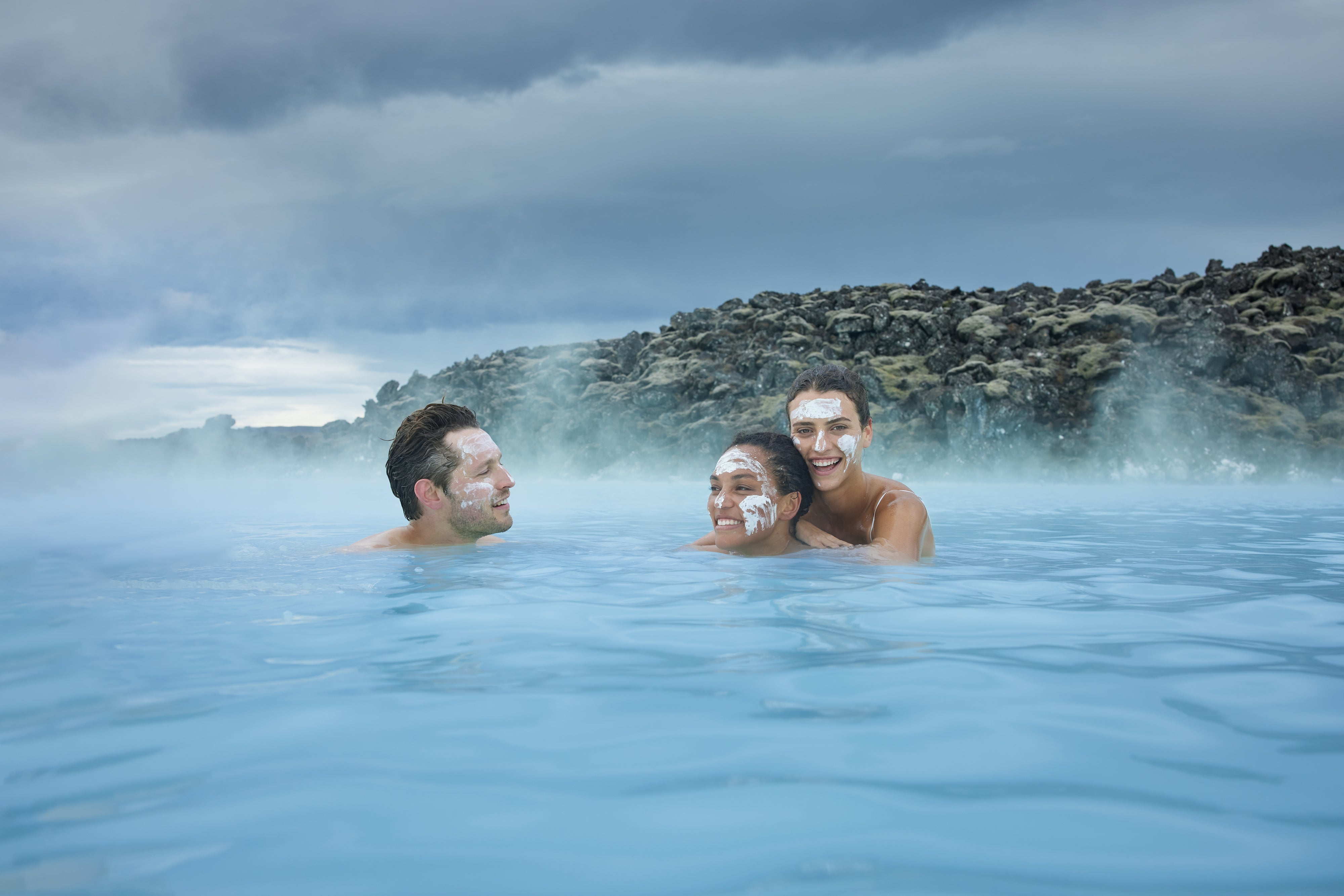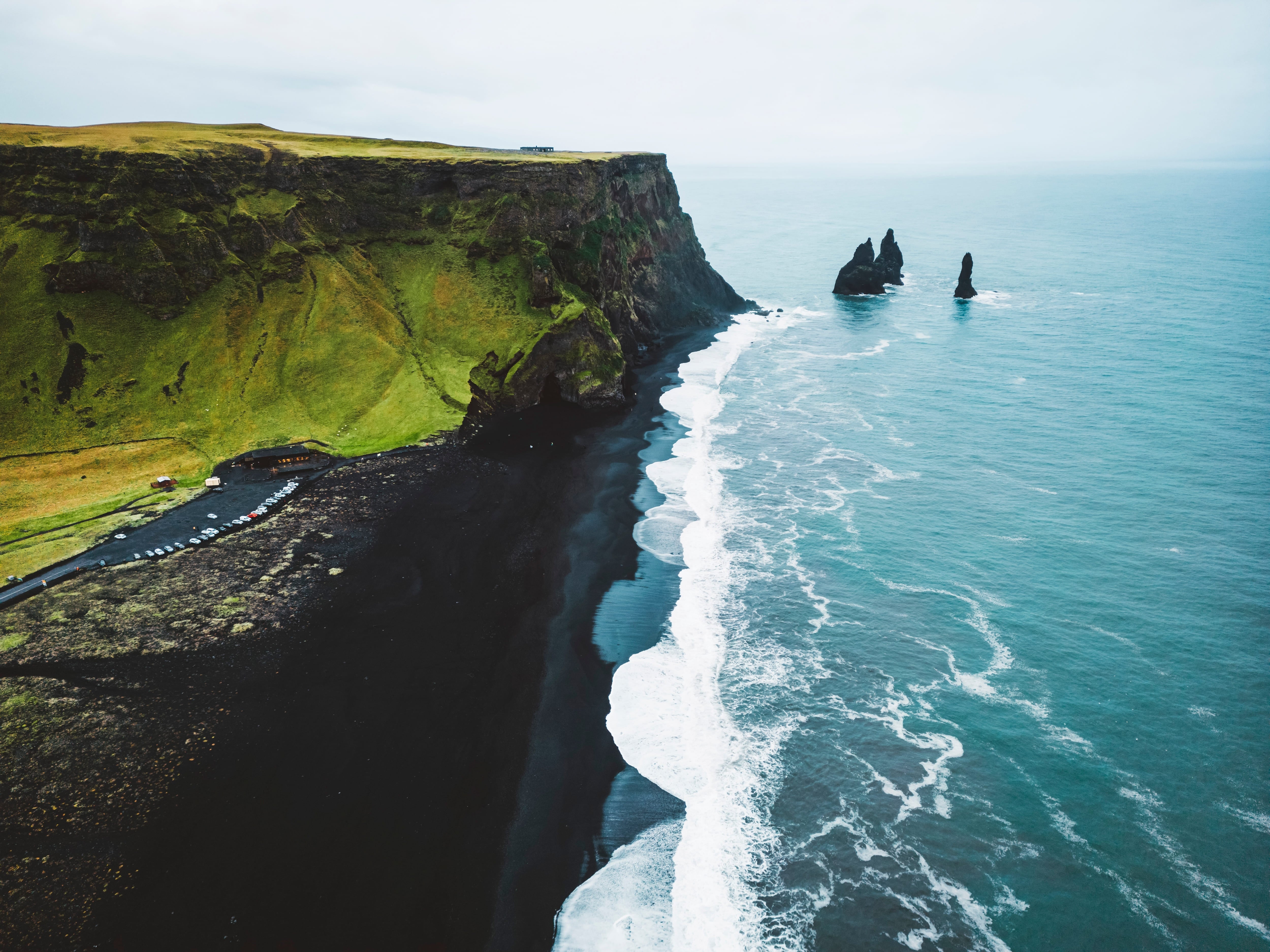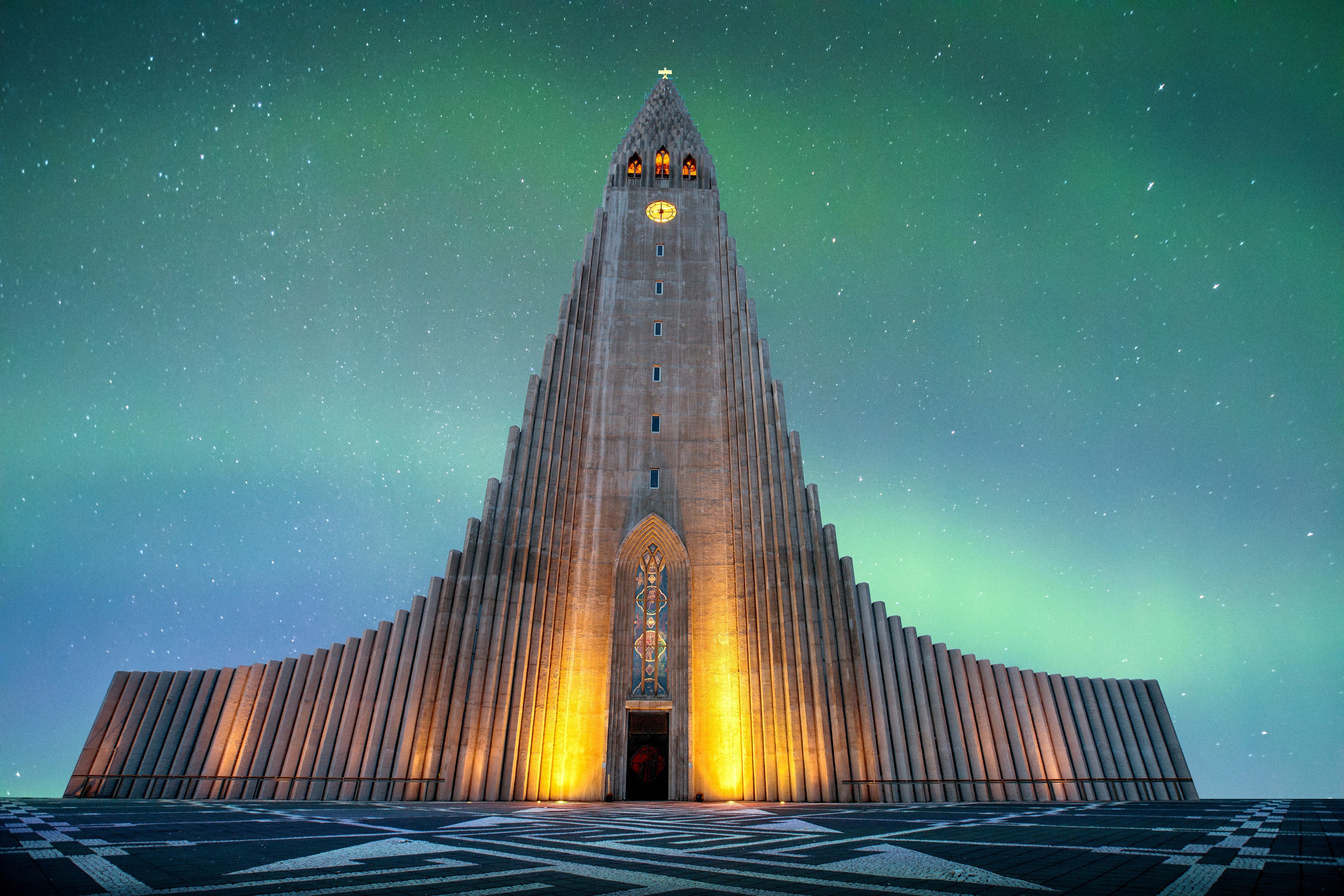Discover Glymur, Iceland’s second-tallest waterfall, cascading 650 feet (198 meters). Located in the scenic Hvalfjordur Fjord in West Iceland, it offers dramatic canyon views, winding rivers, and untouched scenery.
Glymur is one of the best hikes near Reykjavik and a favorite among locals and visitors. Nestled in Hvalfjordur Fjord, it’s a beautiful stop on self-drive tours exploring the hidden natural wonders of West Iceland.
Why You Can Trust Our Content
Guide to Iceland is the most trusted travel platform in Iceland, helping millions of visitors each year. All our content is written and reviewed by local experts who are deeply familiar with Iceland. You can count on us for accurate, up-to-date, and trustworthy travel advice.
Like many waterfalls in Iceland, Glymur is steeped in folklore. Legend tells of a man turned into a whale by an elf woman who drowned a priest’s son. The priest lured the whale up the river, where it crashed into the canyon, creating the thunderous rumble that gave Glymur its name, meaning “loud echo.”
To get to Glymur, you can drive north from Reykjavik towards Borgarnes. Many travelers visit Glymur on a road trip using a rental car from Reykjavik, while others join guided hiking tours in Iceland to safely explore its trails and river crossings.
Whether you come for the adventure, the breathtaking views, or the legend behind it, Glymur offers one of Iceland’s most rewarding hikes. Keep reading to find out how to experience this unforgettable natural wonder.
Quick Facts About Glymur Waterfall
-
Location: Hvalfjordur (Whale Fjord), West Iceland, about 45 miles (72 kilometers) from Reykjavik.
-
Height: 650 feet (198 meters).
-
Trail type: The main Glymur Waterfall trail is a 4.4-mile (7.08-kilometer) loop and is considered moderate to difficult.
-
Typical hike time: The Glymur Waterfall hike typically takes about 3 to 4 hours round trip, but can range from 2 to 6 hours depending on your pace.
-
Best months: The best time to hike Glymur is from June to September, when the trail is accessible and the seasonal log bridge is in place.
-
Alternative spellings: Glymur foss, Glymer, Glimur
-
Good to know: Narrow paths and a river crossing make the Glymur hike unsuitable for small children or anyone uncomfortable with heights.
How to Get to Glymur Waterfall Parking
 Getting to Glymur Waterfall from Reykjavik takes about 60-70 minutes by car. Drive north on Route 1 towards Borgarnes, then turn right onto Route 47 before the Hvalfjordur Tunnel. The road winds through one of the scenic Icelandic fjords, with views of mountains and waterfalls along the way.
Getting to Glymur Waterfall from Reykjavik takes about 60-70 minutes by car. Drive north on Route 1 towards Borgarnes, then turn right onto Route 47 before the Hvalfjordur Tunnel. The road winds through one of the scenic Icelandic fjords, with views of mountains and waterfalls along the way.
After about 45 minutes, look for the Glymur sign and turn right onto a gravel road. Follow it for 3 kilometers (about 1.7 miles) to the parking area marked as “Botnsa and Glymur Parking” on Google Maps. The gravel lot is suitable for most cars in summer, though winter access may be limited by snow or ice.
Parking is free and spaces fill up quickly, so arrive early to secure a spot and enjoy quieter trails. There aren’t any facilities or restrooms at the Glymur Waterfall parking lot, so it’s best to come prepared.
There’s no public transportation to the trailhead, so driving or joining a guided hike from Reykjavik is your best option. The trail begins just beyond the parking area, with signs pointing the way to the waterfall.
How to Hike to Glymur Waterfall
 The only way to see Glymur Waterfall is by hiking. The Glymur hike starts right from the parking lot, starting with an easy 30-minute walk through grassy valleys and along the Botnsa River.
The only way to see Glymur Waterfall is by hiking. The Glymur hike starts right from the parking lot, starting with an easy 30-minute walk through grassy valleys and along the Botnsa River.
Soon, the terrain becomes steeper as the path climbs toward moss-covered cliffs and narrow ledges overlooking Hvalfjordur Fjord. The path can be steep and narrow in places, but the scenery makes the Glymur trekking worthwhile.
The full hike takes about 3 to 4 hours round-trip. You can choose between an out-and-back route on the east side of the river, which is easier and better for first-timers, or a loop trail that crosses the river twice for extra adventure. Both options offer incredible viewpoints of the canyon and waterfall.
The trail is considered moderate, with some steep and slippery sections, so good hiking shoes and careful footing are essential. There are no facilities or restrooms near the trail, so come prepared with water, snacks, and layers for Iceland’s ever-changing weather.
Glymur Hike at a Glance

-
Distance: Glymur Waterfall hike is about 3.7 to 4.7 miles (6 to 7.5 kilometers), depending on the trail.
-
Elevation gain: 985-1312 feet (300–400 meters).
-
Difficulty: The Glymur hike is rated moderate, with short, steep sections and two river crossings.
-
Route options: Out‑and‑back to the main viewpoint or a loop returning along the opposite rim.
-
Pace: Most hikers complete the Glymur Waterfall hike in 3 to 4 hours, plus time for photos.
-
Seasonal access and Glymur weather: The weather in Glymur can be windy and slippery. Snow, ice, or high water may make hiking to Glymur Waterfall unsafe outside of summer.
-
Safety tip: Always check the weather forecast, road conditions, and recent reviews before hiking to Glymur Waterfall. Be prepared to turn back if the river is swift or visibility is poor.
River Crossings to Glymur Waterfall
 Hiking Glymur Waterfall involves two river crossings. The first, at the Botnsa River, has a log bridge with a guide rope, available from June to September when water levels are lower. Outside these months, the log is removed, making the crossing more challenging.
Hiking Glymur Waterfall involves two river crossings. The first, at the Botnsa River, has a log bridge with a guide rope, available from June to September when water levels are lower. Outside these months, the log is removed, making the crossing more challenging.
Higher up the trail, a second crossing requires wading through shallow, icy water, as pictured above. Lightweight water shoes or sandals are recommended to keep your feet protected and your boots dry. Hiking poles can help with balance, especially on slippery sections.
Climbing to Glymur Waterfall
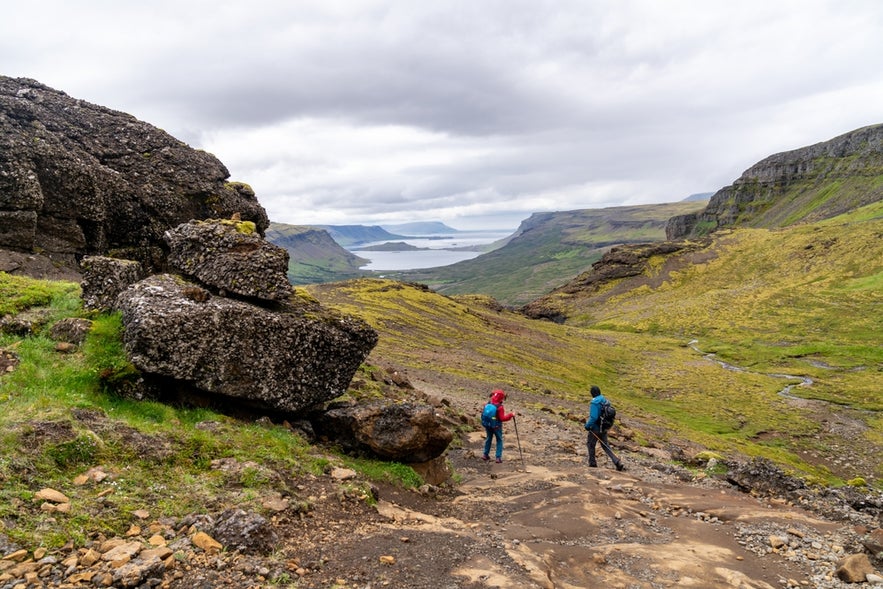 After crossing the river, the trail climbs up the canyon toward Glymur Waterfall. The path can be rocky and uneven, with some narrow sections along the edge. Wear sturdy hiking shoes, pack layers for Iceland’s unpredictable weather, and take your time on steep or slippery stretches.
After crossing the river, the trail climbs up the canyon toward Glymur Waterfall. The path can be rocky and uneven, with some narrow sections along the edge. Wear sturdy hiking shoes, pack layers for Iceland’s unpredictable weather, and take your time on steep or slippery stretches.
As you ascend, sweeping views of Hvalfjordur unfold beneath you. Witness Glymur Waterfall plunging into its deep moss-covered canyon, with winding rivers carving through the valley.
If you take the loop trail to Glymur, be aware of loose gravel on the descent. The route is marked by rock cairns with yellow markers. Stick to the marked path, as side trails can lead away from the waterfall.
Photography Tips for Glymur Waterfall
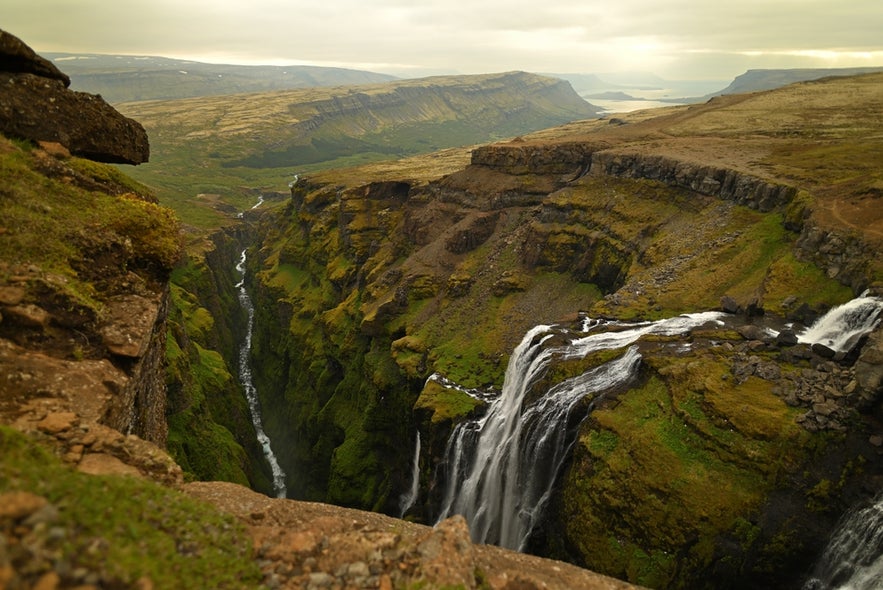 The best photos of Glymur Waterfall are taken from the canyon rim, looking back toward the falls. Early morning or late afternoon provides softer light for photography. Bring a lightweight tripod for long-exposure shots and use a dry bag to protect your gear from mist drifting across the trail.
The best photos of Glymur Waterfall are taken from the canyon rim, looking back toward the falls. Early morning or late afternoon provides softer light for photography. Bring a lightweight tripod for long-exposure shots and use a dry bag to protect your gear from mist drifting across the trail.
Glymur Waterfall Folklore and Legends
 Glymur, meaning “rumble” in Icelandic, gets its name from a legend about a man cursed by an elf woman and transformed into a massive whale named Rauðhöfði (Redhead). In his rage, Redhead terrorized the seas, sinking ships and causing destruction along Hvalfjordur (Whale Fjord), where he drowned the sons of a local pastor.
Glymur, meaning “rumble” in Icelandic, gets its name from a legend about a man cursed by an elf woman and transformed into a massive whale named Rauðhöfði (Redhead). In his rage, Redhead terrorized the seas, sinking ships and causing destruction along Hvalfjordur (Whale Fjord), where he drowned the sons of a local pastor.
Seeking revenge for his lost children, a blind pastor and his daughter lured Redhead inland. They guided the whale up the river toward what is now Glymur Waterfall. As Redhead thrashed through the narrow canyon, the cliffs trembled, and the roaring echoes gave the waterfall its name. The nearby hills became known as Skjálfandahæðir, the “Shaking Hills.”
Redhead’s journey ended at Hvalvatn (Whale Lake), where he is said to have died. Hikers on the Glymur trail can still see this lake from viewpoints near the top, and it’s easy to imagine the legend unfolding among cliffs and the thunderous roar of Glymur Waterfall.
Tips to Hike Glymur

-
Wear sturdy hiking shoes: The trail includes steep, rocky paths and two river crossings. Waterproof shoes with a good grip are essential.
-
Dress in layers: The weather in West Iceland changes quickly. Bring a light waterproof jacket, hat, and gloves.
-
Pack water and snacks: There are no facilities or cafes near the trail. Carry enough water and a packed lunch for the 3–4 hour Glymur Waterfall hike.
-
Use walking poles: Helpful for balance on steep sections and when crossing streams.
-
Start early: Glymur is a popular hiking destination in Iceland, especially in summer. Arriving early in the morning means easier parking and fewer crowds.
-
Follow marked cairns: Stay on the main trail to avoid unmarked paths.
-
Protect your gear: Mist from the falls can be strong. Keep electronics in a dry bag.
-
Check road conditions: Before driving, visit road.is for weather or closure updates.
Packing Essentials for the Glymur Hike
 For the Glymur Waterfall hike in Iceland, wear hiking boots with good traction and dress in layers to handle changing weather. Even in summer, temperatures can shift quickly, so pack a light waterproof jacket, hat, and gloves to stay warm and dry.
For the Glymur Waterfall hike in Iceland, wear hiking boots with good traction and dress in layers to handle changing weather. Even in summer, temperatures can shift quickly, so pack a light waterproof jacket, hat, and gloves to stay warm and dry.
Bring a small backpack with water, snacks, and trekking poles for support on steep or uneven terrain. If you plan to do the loop trail, pack lightweight water shoes or sandals for the upper river crossing. A small towel can help dry your feet after wading through cold water.
To make your hike more comfortable and safe, carry a map or an offline GPS, and keep your camera or drone gear in a waterproof bag. Drone use is allowed but regulated, so always check local drone rules before flying near Glymur Waterfall or Hvalfjordur Fjord.
Things to Do Near Glymur Waterfall

Many travelers pair the Glymur Waterfall hike in Iceland with nearby attractions in Hvalfjordur and Borgarfjordur, turning it into a well-rounded day of nature, culture, and relaxation. After exploring the canyon, you can unwind in hot springs, visit local farms, or explore Iceland’s fascinating history. Here are the best things to do near Glymur Waterfall.
Relax at Hvammsvik Hot Springs
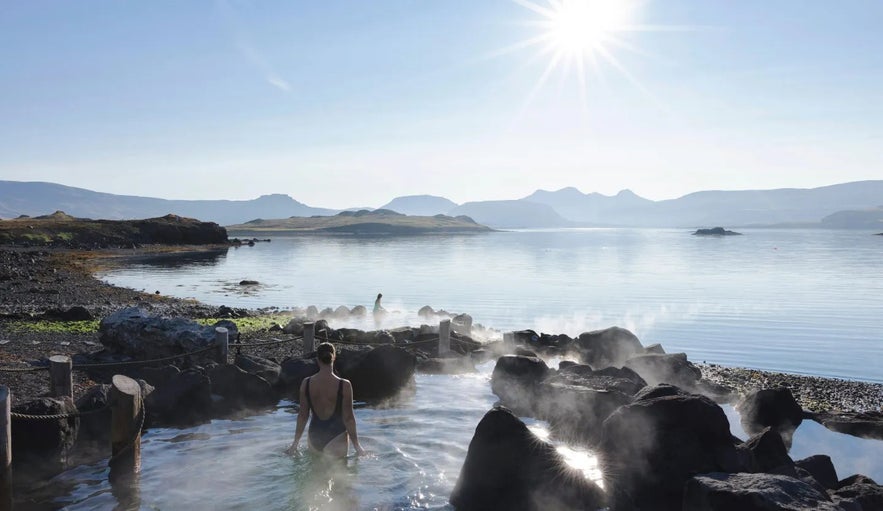 Unwind at Hvammsvik Hot Springs, one of Iceland’s most scenic bathing spots along Hvalfjordur. The pools are tucked between the sea and mountains, blending into the natural landscape. With an Hvammsvik entry ticket, you can enjoy the warm waters, perfect for relaxing sore legs after the challenging Glymur hike.
Unwind at Hvammsvik Hot Springs, one of Iceland’s most scenic bathing spots along Hvalfjordur. The pools are tucked between the sea and mountains, blending into the natural landscape. With an Hvammsvik entry ticket, you can enjoy the warm waters, perfect for relaxing sore legs after the challenging Glymur hike.
Visit the War and Peace Museum in Hvalfjordur Fjord
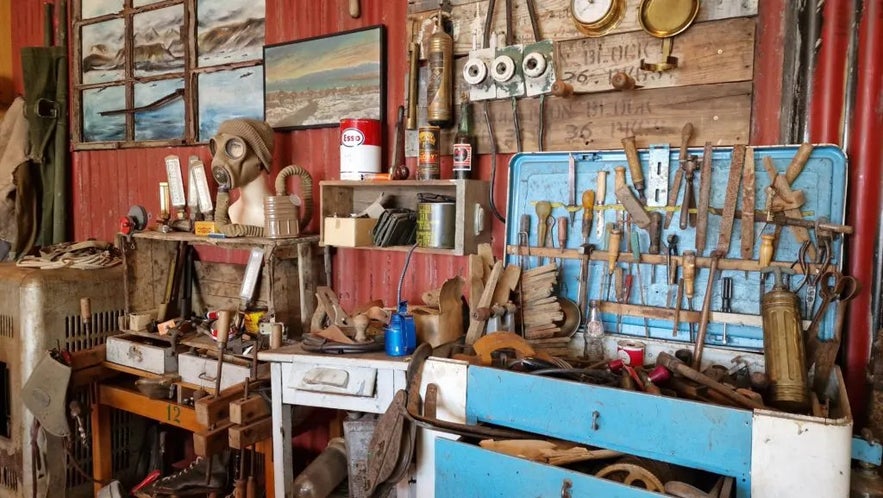 Step inside the War and Peace Museum in the Hvalfjordur Fjord to uncover Iceland’s World War II history. Its exhibits share stories from 1940–1945, when Allied troops occupied Iceland, transforming quiet fjord villages into military hubs. See real artifacts, photos, and personal accounts from locals who lived it.
Step inside the War and Peace Museum in the Hvalfjordur Fjord to uncover Iceland’s World War II history. Its exhibits share stories from 1940–1945, when Allied troops occupied Iceland, transforming quiet fjord villages into military hubs. See real artifacts, photos, and personal accounts from locals who lived it.
Discover the Settlement Centre of Borgarnes
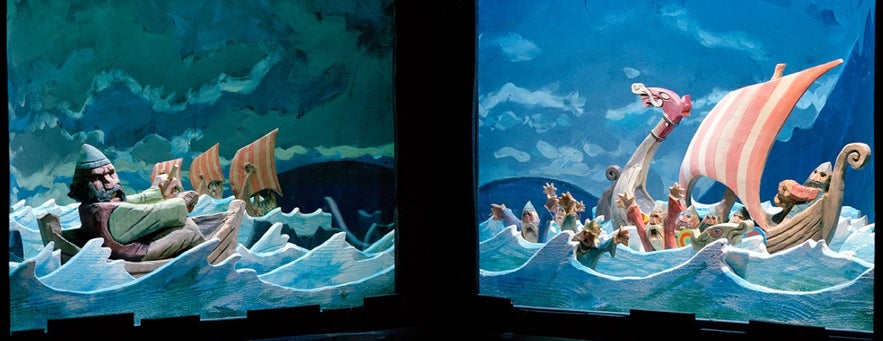 Discover Iceland’s Viking past at the Settlement Centre in Borgarnes. With your Settlement Center and Exhibition entry ticket, you can explore the interactive exhibits that trace the nation’s earliest history and legendary sagas, including Egill Skalla-Grímsson’s tale. It’s an inspiring stop for history lovers exploring West Iceland’s earliest settlements.
Discover Iceland’s Viking past at the Settlement Centre in Borgarnes. With your Settlement Center and Exhibition entry ticket, you can explore the interactive exhibits that trace the nation’s earliest history and legendary sagas, including Egill Skalla-Grímsson’s tale. It’s an inspiring stop for history lovers exploring West Iceland’s earliest settlements.
Visit Haafell Goat Farm
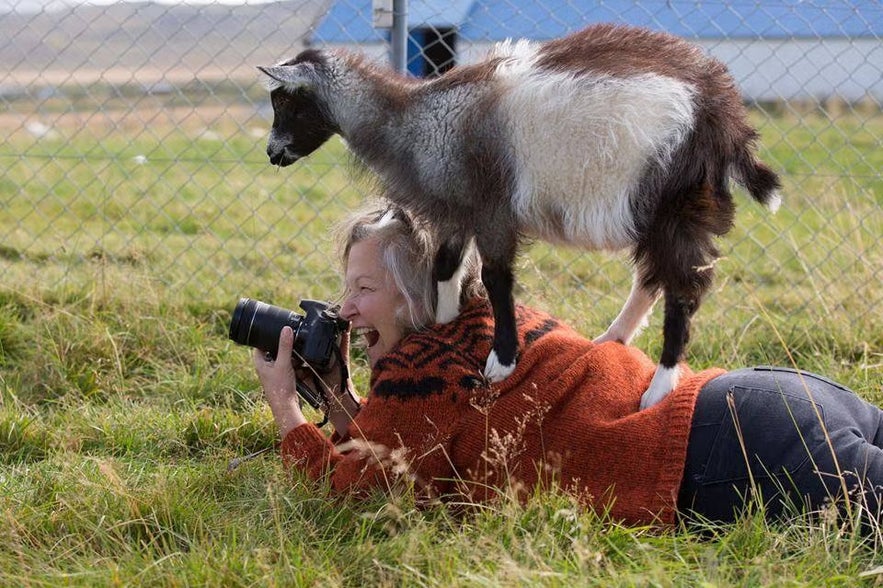 Explore Haafell Goat Farm, a family-run sanctuary preserving Iceland’s endangered goat breed. Meet these friendly animals, learn about sustainable farming, and browse handmade goat milk soaps and cheeses. Open from June to August, it’s a fun stop for travelers exploring Iceland with kids, offering a glimpse of rural life in the Borgarfjordur region.
Explore Haafell Goat Farm, a family-run sanctuary preserving Iceland’s endangered goat breed. Meet these friendly animals, learn about sustainable farming, and browse handmade goat milk soaps and cheeses. Open from June to August, it’s a fun stop for travelers exploring Iceland with kids, offering a glimpse of rural life in the Borgarfjordur region.
See Hraunfossar and Barnafoss Waterfalls
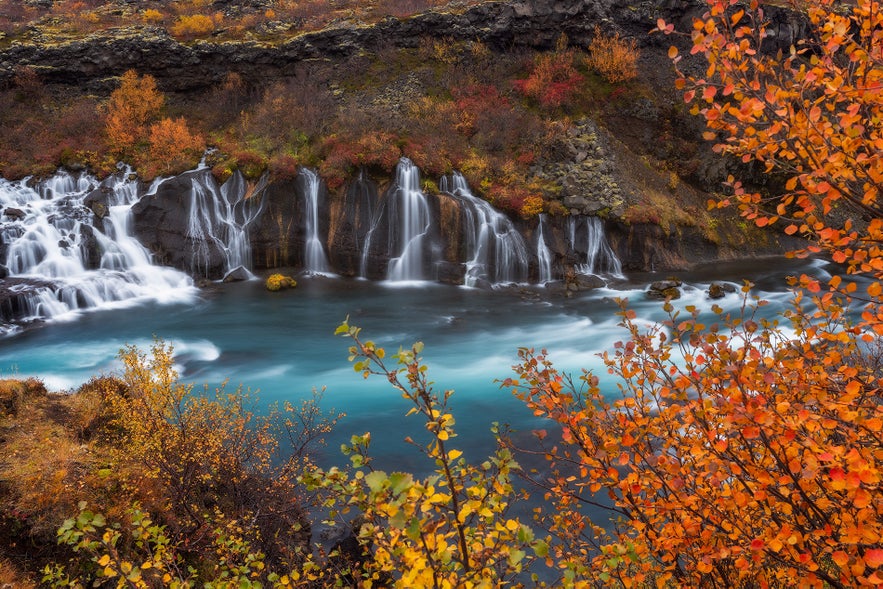 Experience two of West Iceland’s most beautiful waterfalls in one trip. Hraunfossar’s gentle streams spill through mossy rocks, while Barnafoss crashes dramatically through a narrow gorge. Together, they showcase Iceland’s diverse landscapes and are easy to visit on the same scenic drive.
Experience two of West Iceland’s most beautiful waterfalls in one trip. Hraunfossar’s gentle streams spill through mossy rocks, while Barnafoss crashes dramatically through a narrow gorge. Together, they showcase Iceland’s diverse landscapes and are easy to visit on the same scenic drive.
Stop at Deildartunguhver Hot Spring
 Visit Deildartunguhver, Europe’s most powerful hot spring, where steaming water surges from red earth at nearly 212 F (100 C). The geothermal heat here supplies nearby towns and the Krauma Spa. Stand close enough to feel the warmth and witness the incredible energy that fuels Iceland’s natural wonders.
Visit Deildartunguhver, Europe’s most powerful hot spring, where steaming water surges from red earth at nearly 212 F (100 C). The geothermal heat here supplies nearby towns and the Krauma Spa. Stand close enough to feel the warmth and witness the incredible energy that fuels Iceland’s natural wonders.
Relax and Unwind at Krauma Spa
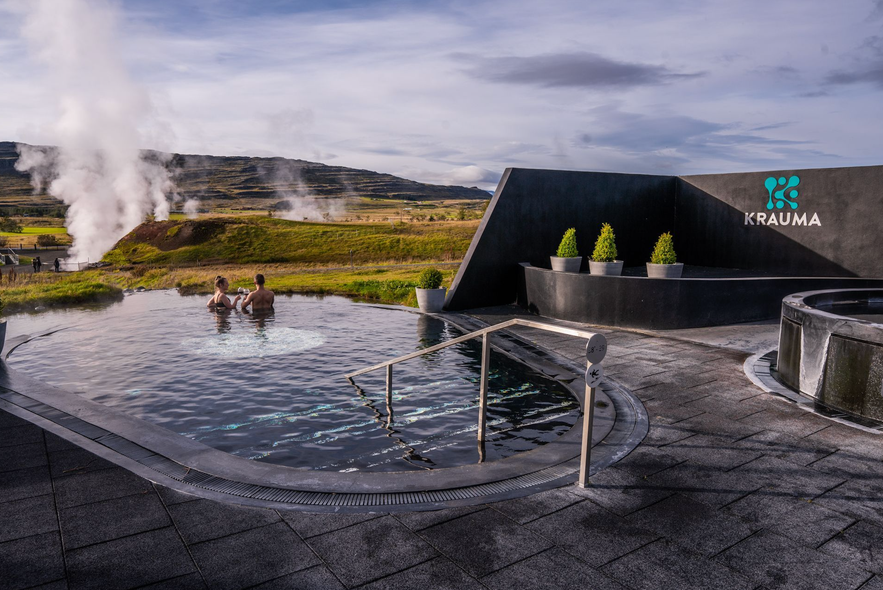
Uncover Reykholt’s History and Hot Springs
 Explore Reykholt, a historic cultural center once home to medieval scholar and writer Snorri Sturluson. Visit his 13th-century hot pool, wander geothermal fields, and learn about his contributions to Icelandic sagas.
Explore Reykholt, a historic cultural center once home to medieval scholar and writer Snorri Sturluson. Visit his 13th-century hot pool, wander geothermal fields, and learn about his contributions to Icelandic sagas.
Explore the Snaefellsnes Peninsula
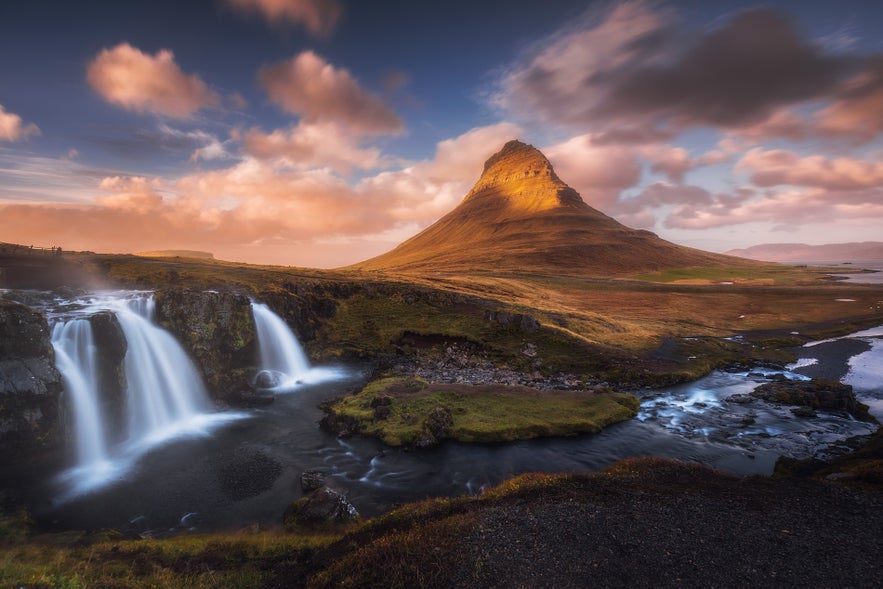 Extend your Glymur adventure with a trip to the Snaefellsnes Peninsula, just 1.5 hours away by car. Discover iconic sights like Kirkjufell Mountain and Snaefellsjokull National Park, where dramatic landscapes showcase some of Iceland’s most spectacular viewpoints. Many guided Snaefellsnes tours can help you explore the peninsula’s highlights with ease and local insight.
Extend your Glymur adventure with a trip to the Snaefellsnes Peninsula, just 1.5 hours away by car. Discover iconic sights like Kirkjufell Mountain and Snaefellsjokull National Park, where dramatic landscapes showcase some of Iceland’s most spectacular viewpoints. Many guided Snaefellsnes tours can help you explore the peninsula’s highlights with ease and local insight.
Discover Iceland’s Highest and Most Powerful Waterfalls
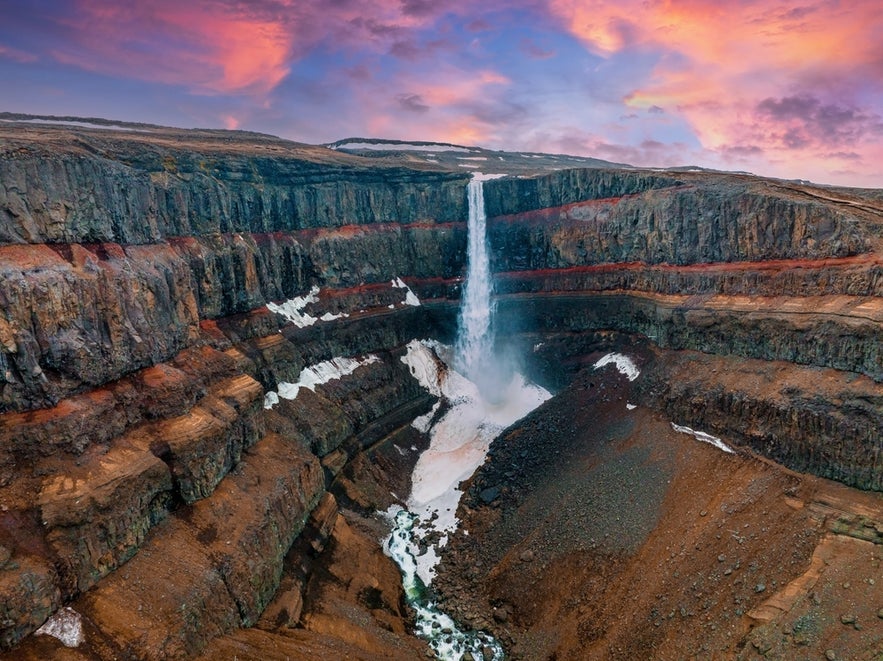 For years, Glymur held the title of Iceland’s tallest waterfall. In 2007, melting at the Vatnajokull Glacier revealed Morsarfoss Waterfall, which is now recognized as the country’s highest at around 787 feet (240 meters).
For years, Glymur held the title of Iceland’s tallest waterfall. In 2007, melting at the Vatnajokull Glacier revealed Morsarfoss Waterfall, which is now recognized as the country’s highest at around 787 feet (240 meters).
Hengifoss in the Eastfjords ranks as Iceland’s third-tallest waterfall at 429 feet (128 meters). Its deep gorge, lined with red clay streaks pressed between dark basalt rock layers, gives the waterfall a dramatic look. The trail to Hengifoss is one of the popular hikes in East Iceland, offering a scenic route past multiple waterfalls.
Meanwhile, Dettifoss may not be the tallest, but it is Europe’s most powerful waterfall. With an incredible volume of water thundering over its edge, it’s a must-see highlight on many Diamond Circle tours and offers an unforgettable experience.
Places to Stay Near Glymur Waterfall
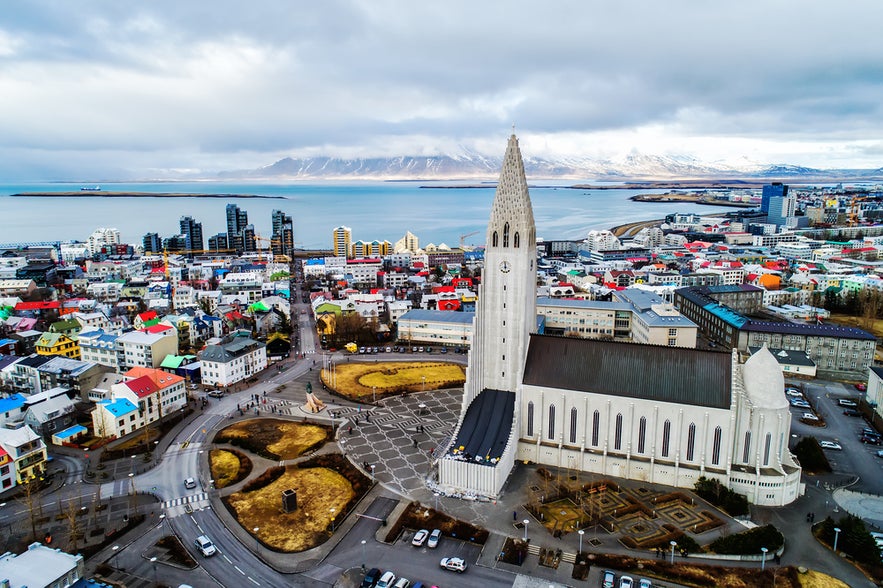 The best places to stay when visiting Glymur Waterfall are in Borgarnes or Reykjavik. Reykjavik is just over an hour’s drive away, while Borgarnes is only 45 minutes from the trailhead, offering a convenient base with local dining, fjord views, and a relaxing spot to unwind after your hike.
The best places to stay when visiting Glymur Waterfall are in Borgarnes or Reykjavik. Reykjavik is just over an hour’s drive away, while Borgarnes is only 45 minutes from the trailhead, offering a convenient base with local dining, fjord views, and a relaxing spot to unwind after your hike.
A top countryside choice is Hraunsnef Country Hotel, a Norse-themed farm stay where guests can meet animals, stroll along short nature trails, and enjoy meals made with local ingredients. The rooms are simple, quiet, and perfect for relaxing after a long day on the trail.
For convenience, stay at the B59 Hotel in Borgarnes. This modern property features spacious rooms, a relaxing spa, and an on-site restaurant. It is ideal for travelers who want easy access to West Iceland’s top attractions while enjoying comfort and amenities.
If you prefer something cozier, Englendingavik Guesthouse offers charming rooms overlooking the ocean. Set in one of Borgarnes’ most scenic waterfront locations, it features a cafe and restaurant where you can enjoy Icelandic cuisine along with beautiful coastal views.
Planning Tip: Summer and early autumn are the best times for hiking Glymur, so it’s best to book your accommodation early, especially for weekend stays. If you plan to start before sunrise, check if your hotel offers an early breakfast or a takeaway option.
Glymur Waterfall FAQs
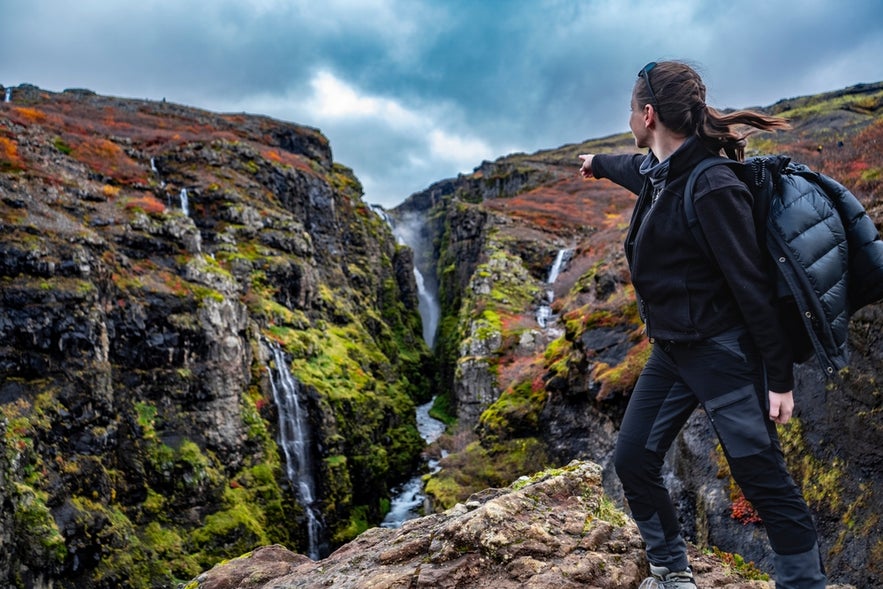 Here are the most frequently asked questions about this popular hike in Iceland:
Here are the most frequently asked questions about this popular hike in Iceland:
What makes Glymur Waterfall special?
Glymur Waterfall stands out as Iceland’s second-highest waterfall at 650 feet (198 meters), surrounded by dramatic cliffs and lush mossy valleys. The combination of challenging terrain and incredible views makes it one of the most scenic day hikes from Reykjavik.
Can you see Glymur Waterfall without hiking?
No, you can’t see Glymur Waterfall without hiking, as it’s hidden deep inside a canyon. Even a short hike offers scenic views of the valley, but reaching the upper viewpoints gives you the best perspective of Iceland’s second-highest waterfall.
What is the weather like at the Glymur Waterfall?
Weather near Glymur Waterfall changes quickly, so always check the forecast before heading out. Expect wind, rain, and occasional fog in the canyon even in summer. Bring warm layers, a waterproof jacket, and sturdy hiking boots to stay comfortable during the hike.
When is the best time to hike Glymur Waterfall?
The best time to hike Glymur Waterfall is from June to September, when the trail is clear, and the log bridge makes the river crossing easier. During winter, snow and ice often make the hike unsafe, and the waterfall is harder to access.
Is the Glymur river crossing open year‑round?
No, the Glymur river crossing is only accessible from late May to September, when a seasonal log bridge is in place. Outside these months, the river is extremely dangerous due to strong currents, ice, and slippery rocks. Hiking Glymur in winter is not recommended.
How long is the Glymur Waterfall hike?
The Glymur Waterfall hike takes around 3 to 4 hours round-trip, depending on your pace and how often you stop for photos. The moderate to difficult trail covers roughly 4 to 5 miles (6 to 8 kilometers) and includes steep climbs, river crossings, and rocky terrain.
Is the Glymur Waterfall hike difficult?
The Glymur hike is considered moderate to challenging, depending on your route. The trail includes steep climbs, loose gravel, and a river crossing, so a reasonable fitness level and sure footing are essential for a safe and enjoyable hike.
Do you need a guide to hike Glymur Waterfall?
You don’t need a guide to hike to Glymur Waterfall, as the trail is well-marked and popular among locals. However, joining a guided Glymur tour from Reykjavik can make the experience easier and more informative, especially if you’re new to hiking in Iceland.
Is the Glymur hike suitable for kids?
Hiking Glymur is not ideal for very young children, but it may be suitable for older kids (around 8-12 years and up) who are comfortable with a strenuous hike and challenging river crossings. Small children may find the river crossing and narrow paths too challenging.
How far is Glymur from Reykjavik?
Glymur Waterfall is about 40 miles (65 kilometers) from Reykjavik, or roughly a 1.5-hour drive through the scenic Hvalfjordur Fjord. The road is paved and easy to follow, making it a great day trip from Iceland’s capital.
Is there an entrance fee or parking fee at Glymur Waterfall?
There’s no entrance or parking fee at Glymur Waterfall. The parking lot at the trailhead is small but free, so it’s best to arrive early, especially during summer weekends when it can get busy.
What should I wear or bring for the Glymur hike?
Wear sturdy hiking boots, layered clothing, and a waterproof jacket for changing weather conditions. Bring water shoes or sandals for the river crossing, plus snacks, water, and a camera to capture the stunning canyon scenery.
Plan Your Visit to Glymur Waterfall
 Experience Glymur Waterfall, as part of hiking tours or self-drive adventures in West Iceland. Located within easy reach of Reykjavik, it’s one of the most rewarding day hikes in Iceland you can take without venturing far from the capital.
Experience Glymur Waterfall, as part of hiking tours or self-drive adventures in West Iceland. Located within easy reach of Reykjavik, it’s one of the most rewarding day hikes in Iceland you can take without venturing far from the capital.
The trail connects smoothly with nearby attractions in Hvalfjordur and Borgarfjordur, making it easy to combine with hot springs, lava caves, and scenic fjord drives in a single day. A hike to Glymur Waterfall reveals Iceland’s hidden canyon landscapes, winding rivers, and moss-covered cliffs rarely seen by casual visitors.
From thrilling hikes to peaceful moments in nature, Glymur delivers a mix of adventure, solitude, and natural beauty that leaves a lasting impression on any traveler.



